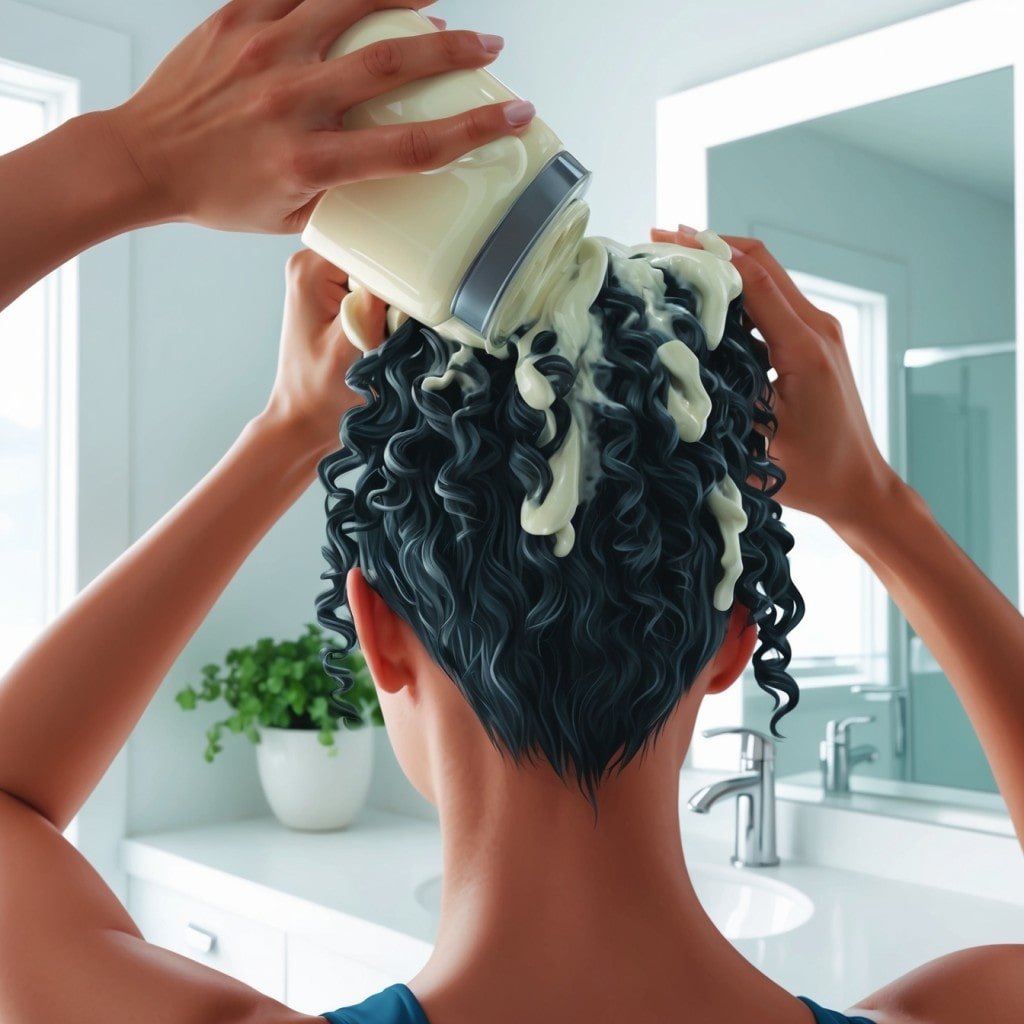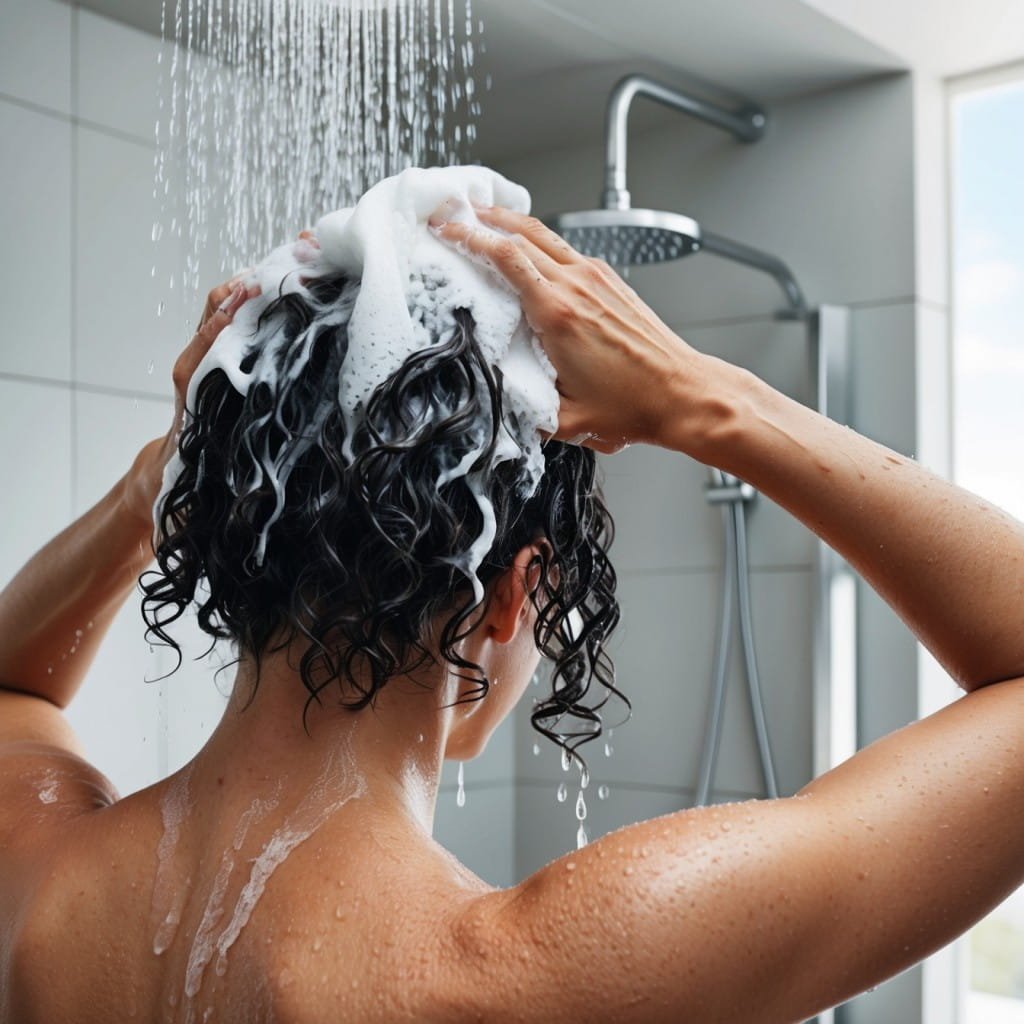High porosity hair refers to hair that has gaps and holes in the cuticle, the outermost layer of the hair shaft. These gaps allow moisture to pass quickly in and out, making it difficult for the hair to retain moisture. People with this hair type often struggle with dryness, frizz, and damage because their hair absorbs moisture rapidly but also loses it just as fast.
Causes of Porous Hair
This hair type can be a result of several factors, both genetic and environmental. Some individuals are born with naturally porous hair, while others develop it due to damage from chemical treatments, heat styling, or environmental stressors like sun exposure and pollution. Over time, these factors can weaken the hair cuticle, leading to the gaps and holes that characterize this hair type.
Signs and Symptoms of High Porosity Hair
Wondering if you have high porosity hair? Here are some telltale signs:
- Your hair dries very quickly after washing.
- It tends to look and feel dry, even shortly after moisturizing.
- Your hair absorbs products rapidly but may still feel dry.
- You experience a lot of frizz, especially in humid weather.
- Your hair is prone to tangling and breakage.
How to Identify Porous Hair at Home
There are a few simple tests you can do at home to determine if you have porous hair. One popular method is the “float test.” Take a few strands of clean hair and place them in a bowl of water. If your hair sinks quickly, it likely has high porosity, as it is absorbing the water rapidly. For more details on determining your hair type, check out this guide from Healthline.
Low vs High Porosity Hair
Understanding the difference between low and porous hair is crucial for effective hair care. While low porosity hair has tightly closed cuticles that repel moisture, porous hair has open cuticles that absorb and lose moisture quickly. This distinction helps in selecting the right products and care techniques for your hair type.
Key Differences Between Low and High Porosity Hair
- Moisture Absorption: This hair type absorbs water quickly but also loses it fast, while low porosity hair resists moisture penetration.
- Drying Time: Porous hair dries faster, whereas low porosity hair takes longer to dry.
- Product Absorption: This kind of hair may require more product to feel moisturized, while low porosity hair can easily become weighed down by heavy products.
Why Hair Porosity Matters
Understanding your hair’s porosity is essential for choosing the right products and treatments. It allows you to tailor your hair care routine to meet the specific needs of your hair, whether it’s sealing in moisture for high porosity hair or finding lightweight products for low porosity hair. For more insights into why this hair type is so crucial, this article from Beautycon offers an in-depth look.
Caring for High Porosity Hair
Best Practices for Porous Hair Care
Caring for this hair type requires a focus on moisture retention and damage prevention. For example, using natural treatments like rosemary water can be highly beneficial. Rosemary water is known for its ability to strengthen hair and improve scalp health, which can be particularly useful for porous hair. You can learn more about making your own rosemary water at home in this complete guide.
Washing Tips for High Porosity Hair
When washing this type of hair, it’s essential to use gentle, sulfate-free shampoos that won’t strip the hair of its natural oils. Washing with lukewarm or cool water can help seal the cuticle, preventing excess moisture loss. Additionally, washing your hair no more than twice a week can reduce dryness.
Conditioning Tips for Porous Hair

Conditioning is crucial for this hair type. Look for deep conditioners that are rich in moisture and contain ingredients like shea butter, coconut oil, and glycerin. These ingredients help to seal the cuticle and retain moisture. For added hydration, consider using a leave-in conditioner after every wash.
High Porosity Hair Products
Using the right products is vital for managing this kind of hair. Below are some recommendations for shampoos, conditioners, and leave-in treatments. If you’re also dealing with 3C hair, many of the products recommended for that hair type can be quite effective for this hair type as well. Check out these must-have products for 3C hair that might complement your routine.
Shampoos for High Porosity Hair
Choose shampoos that are sulfate-free and contain hydrating ingredients like aloe vera, honey, or oils. These shampoos will cleanse your hair without stripping it of essential moisture.
Conditioners for High Porosity Hair
Opt for thick, creamy conditioners that provide intense moisture. Look for products with humectants like glycerin and honey, which attract moisture to the hair, and emollients like shea butter, which help seal in that moisture.
Leave-in Treatments for High Porosity Hair
Leave-in conditioners and treatments are essential for maintaining moisture throughout the day. Products containing proteins can also be beneficial for strengthening the hair and filling in the gaps in the cuticle.
Common Mistakes to Avoid
To keep this hair type in its best condition, avoid these common pitfalls:
Over-Washing

Washing high porosity hair too frequently can strip it of its natural oils, leading to increased dryness and breakage. Stick to washing once or twice a week, depending on your hair’s needs.
Heat Styling
High porosity hair is particularly vulnerable to heat damage. Minimize the use of heat styling tools like blow dryers, flat irons, and curling irons. When you do use them, always apply a heat protectant and use the lowest effective temperature setting.
High Porosity Hair Styling Tips
When managing this hair type, it’s essential to use techniques that minimize frizz and enhance curl definition. If you’re looking for more tips on how to style and care for curly hair, especially 3C hair, you might find this styling guide helpful, as it provides essential tips that could also be applied to your routine.
Protective Styles for Porous Hair
Protective styles are a great way to minimize damage and retain moisture in Porous Hair. Styles like braids, twists, and buns help protect the ends of your hair from environmental stressors and reduce the need for frequent styling.
Maintaining Moisture in Styled Hair
To keep your hair moisturized while in protective styles, regularly apply a light oil or a leave-in conditioner to your scalp and hair. This helps to lock in moisture and reduce frizz.
Best Tools for Styling Porous Hair
Using the right tools can make a big difference in maintaining healthy hair with high porosity. Wide-tooth combs and detangling brushes are gentle on the hair and help prevent breakage. Satin or silk pillowcases and hair wraps can also reduce friction and moisture loss while you sleep.
Conclusion
Embracing Your Hair with High Porosity
This hair type comes with its unique set of challenges, but with the right care and attention, it can be just as beautiful and manageable as any other hair type. Understanding your hair’s needs and using the appropriate products and techniques will go a long way in maintaining its health and vibrancy.
Final Thoughts
Don’t be discouraged by the extra effort this kind of hair may require. With consistency and the right routine, you can keep your hair looking and feeling its best. Remember, healthy hair is happy hair, and taking the time to care for it properly will pay off in the long run.
Frequently Asked Questions (FAQs)
How often should I wash my high porosity hair?
It’s best to wash porous hair once or twice a week to avoid stripping it of its natural oils.
Can I use oils on high porosity hair?
Yes, oils like coconut, argan, and jojoba are great for sealing in moisture and adding shine to hair with high porosity.
What ingredients should I avoid in products for high porosity hair?
Avoid sulfates, alcohols, and heavy silicones, as these can further dry out your hair and cause build-up.
How can I reduce frizz in high porosity hair?
Using leave-in conditioners, applying light oils, and air-drying your hair can help reduce frizz.
Is high porosity hair more prone to breakage?
Yes, because it loses moisture quickly, Porous Hair can become dry and brittle, leading to breakage. Regular conditioning and gentle handling are key to preventing this.


2 Comments